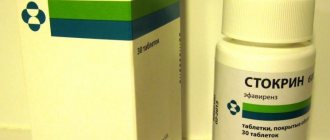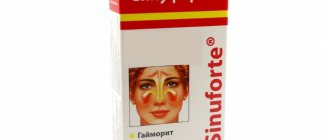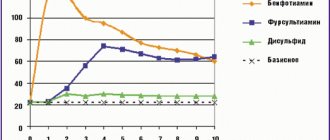“High cholesterol” does not hurt, but it can lead to the development of atherosclerosis. Atherosclerosis affects the cardiovascular system, leading to the formation of atherosclerotic plaques and blood supply disorders. This often ends in heart attacks and strokes.
Today there are many drugs from the statin group. They have been shown to be effective in reducing mortality from cardiovascular disease, but debate continues about their safety. To achieve and maintain the desired levels of lipid metabolism, long-term use of drugs is required, but many patients do not follow the recommendations, causing the effectiveness of treatment to sharply decrease. What to say about patients when doctors have different opinions on this matter.
What are statins
Statins are a group of lipid-lowering drugs. They slow down the work of one of the main enzymes involved in the synthesis of cholesterol - HMC-CoA reductase. This leads to a decrease in cholesterol synthesis in the liver.
A decrease in cholesterol synthesis in hepatocytes increases the number of receptors for low-density lipoproteins (LDL-C) and their subsequent uptake from the bloodstream. In addition, there may be some reduction in the formation of LDL due to inhibition of the synthesis in the liver of their precursor, very low density lipoproteins (VLDL). Thus, statins help reduce total cholesterol, LDL cholesterol and VLDL cholesterol in the blood plasma. At the same time, drugs in this group can reduce the level of TG and slightly increase the level of “good cholesterol” (high-density lipoproteins). The effectiveness of lowering blood cholesterol levels depends on the dose of the drug. To obtain the desired level of reduction, fairly high doses are required.
Their numerous additional properties also contribute to the benefit of statins:
- improving the functional activity of the endothelium;
- stabilization of atheroma (atherosclerotic plaque);
- anti-inflammatory, immunomodulatory and antithrombotic effects;
- positive effect on bone metabolism.
Can Atorvastatin be replaced with Rosuvastatin?
In case of poor tolerability of the drug, which is expressed by negative consequences for the liver, confirmed by deterioration of laboratory parameters, it is necessary to adjust the Atorvastatin dosage regimen: temporarily discontinue it, reduce the dosage, or you can replace it with the newest Rosuvastatin.
You cannot do this on your own, because usually 2–4 weeks after stopping the medication, the level of lipids in the blood returns to its original value, which can greatly worsen the patient’s health. Therefore, the decision about the possibility of replacement should be made together with your doctor.
Indications
Drugs in this group are prescribed only by a doctor and he selects which active ingredient is suitable and its dosage. Usually, for this purpose, the risk of cardiovascular events is determined using a special scale, questionnaire, and tests are taken to determine the lipid spectrum and biochemical blood parameters. Today, statins are prescribed not only after heart attacks and strokes as secondary prevention. Under certain high-risk conditions, a doctor may use statins in the primary prevention of cardiovascular disease.
Mertenil
The medicine is produced by Hungarian. It appeared on the domestic market in 2010 in four dosages: 5, 10, 20, 40 mg in an amount of 30 tablets. Since 2014, it can also be purchased in release forms of 60 and 90 pieces.
The tablets are characterized by a round, biconvex shape. Each dosage has an engraving located on one side of each tablet: 5 mg - C33, 10 - C34, 20 - C35, 40 - C36. The medicine is produced in blisters placed in cardboard packaging.
Minuses
But there are also unresolved issues in statin treatment. Thus, from 40 to 75% of patients stop taking statins within 1-2 years after starting treatment. Patients name the reasons for this: fear of developing undesirable effects from the instructions for the drug (46%), disbelief that the medicine prolongs life (29.4%), taking a large number of other pills (27.6%), forgetfulness (26.5 %), poor control of blood cholesterol levels while taking medication (18.8%), drug withdrawal by a non-attending physician (13.5%). At the same time, the actual development of undesirable effects on statin therapy was observed only in 11.7% of patients, and their manifestations were mild and moderate in severity.
Muscle symptoms
The incidence of symptoms of muscle damage is 7-29%, according to various sources. These include:
- muscle pain;
- muscle weakness;
- muscle inflammation, determined based on examination of a sample of muscle tissue and/or magnetic resonance imaging (MRI);
- myonecrosis - muscle damage, determined by a significant increase in serum creatine kinase (CK) levels;
- rhabdomyolysis - destruction of muscle tissue with acute kidney damage with an increase in serum creatinine;
- autoimmune myopathy is a rare complication accompanied by severe muscle damage even after discontinuation of the drug;
The reasons for this are not well understood. According to one version, there is a decrease in coenzyme Q10 in muscle tissue and a decrease in the level of vitamin D. The work of mitochondria is affected.
Muscle symptoms occur in 7-29%.
Symptoms usually appear in both arms or legs. The period of appearance is about 4-6 weeks after starting to take statins. Sometimes, with diseases of the joints and ligaments, pain increases. This may be due to muscle weakness. Unusually, physically active people are more likely to suffer from muscle symptoms. One study found that athletes were less tolerant of lipid-lowering therapy.
According to research, these symptoms are rare. But the studies themselves often exclude older patients, those with impaired liver and kidney function, and those taking certain medications, that is, it cannot be said that this is an ordinary elderly person with a “bouquet of diseases.”
Diabetes mellitus and insulin resistance
It has been established that long-term use of statins under certain factors can contribute to the development of insulin resistance and diabetes mellitus. This is evidenced not only by research data, but also by national recommendations of some countries.
Risk factors for developing diabetes when taking lipid-lowering drugs may include:
- high body mass index (BMI);
- elderly age;
- heart failure;
- myocardial infarction in the last six months and high cardiovascular risk;
- family predisposition to type 2 diabetes;
- Asian race;
- smoking, alcohol abuse.
Effects on the liver
When taking statins to reduce the negative effect on the liver, you must avoid taking:
- alcohol;
- drugs that are metabolized in the liver along the same pathways (for example, amiodarone, sulfonamides, methyldopa, cyclosporine).
Statins can negatively affect a damaged liver.
They should not be prescribed for active viral hepatitis until liver parameters return to normal.
Drug interactions
Statins have multiple effects. This is due to the fact that they do not act in isolation, but affect many chemical reactions in the body. This is especially important in patients taking multiple medications for cardiovascular diseases.
Atorvastatin or Rosuvastatin: which is better?
Each subsequent synthesis of an active drug substance causes the appearance of other pharmacological characteristics; accordingly, the later Rosuvastatin differs from Atorvastatin in new qualities that make drugs based on it more effective and safer.
Comparison of the drugs Atorvastatin and Rosuvastatin (table):
| Atorvastatin | Rosuvastatin |
| Belonging to a specific group of statins | |
| III generation | IV generation |
| Half-life of the active substance (hours) | |
| 7–9 | 19–20 |
| The activity of these metabolites has been established | |
| Yes | No |
| Primary, average and maximum permissible dosage (mg) | |
| 10/20/80 | 5/10/40 |
| Time for the first effect to appear (days) | |
| 7–14 | 5–9 |
| Time to achieve therapeutic result 90–100% ( week ) | |
| 4–6 | 3–5 |
| Effect on simple lipid levels | |
| yes (hydrophobic) | no (hydrophilic) |
| The degree of involvement of the liver in the transformation | |
| more than 90% | less than 10% |
The use of Atorvastatin and Rosuvastatin at medium doses reduces the level of “bad” cholesterol almost equally well – by 48–54% and 52–63%, so the final choice of the drug in each case is made taking into account the individual characteristics of the patient’s body:
- gender, age, heredity and hypersensitivity to the composition;
- diseases of the digestive and urinary system;
- concurrent medications, nutrition and lifestyle;
- results of laboratory and instrumental studies.
Rosuvastatin is better for treating hypercholesterolemia in people with liver and pancreas problems. Unlike previous statins, it does not require conversion, but immediately enters the bloodstream. It is also primarily excreted through the intestines, which reduces the functional load on these organs.
If a person with high cholesterol has diagnosed obesity, then in this case it is worth giving preference to Atorvastatin. Due to its fat solubility, it actively participates in the breakdown of simple lipids and prevents the conversion of cholesterol from existing fat deposits.
In the presence of fatty hepatosis or cirrhosis of the liver, taking Atorvastatin requires frequent checking of the concentration of liver enzymes in the blood, therefore, in the absence of obesity, for long-term treatment it is recommended to choose a statin with a lower dose of the active substance and the risk of side effects, i.e. Rosuvastatin.
Side Effects Comparison Chart
If we rely on medical practice and reviews of patients taking statins for a long time, then when using high doses of the active substance of both the III and IV generations, in rare cases (up to 3%) side effects of varying severity may be observed on the part of some body systems.
Comparison of the side effects of Atorvastatin and Rosuvastatin (table):
| Area of damage to the body | Possible side effects from taking the drug | |
| Atorvastatin | Rosuvastatin | |
| Gastrointestinal tract |
| |
| Musculoskeletal system |
|
|
| Organs of visual perception |
| |
| central nervous system |
| |
| Organs of hematopoiesis and blood supply |
| |
| Liver and pancreas |
|
|
| Kidneys and urinary tract |
|
|
Comparison of the effectiveness of Rosuvastatin and Rozart
Rozart is more effective than Rosuvastatin - this means that the ability of the drug substance to provide the maximum possible effect is different.
For example, if the therapeutic effect of Rozart is more pronounced, then with Rosuvastatin it is impossible to achieve this effect even in large doses.
Also, the speed of therapy is an indicator of the speed of therapeutic action; Rozart and Rosuvastatin are also different, as is bioavailability - the amount of a drug reaching the site of its action in the body. The higher the bioavailability, the less it will be lost during absorption and use by the body.
Comparison of addiction between Rosuvastatin and Rozart
Like safety, addiction also involves many factors that must be considered when evaluating a drug.
So, the totality of the values of such parameters as “syndrome o” in Rosuvastatin is quite similar to the similar values in Rozart. Withdrawal syndrome is a pathological condition that occurs after the cessation of intake of addictive or dependent substances into the body. And resistance is understood as initial immunity to a drug; in this it differs from addiction, when immunity to a drug develops over a certain period of time. The presence of resistance can only be stated if an attempt has been made to increase the dose of the drug to the maximum possible. At the same time, Rosuvastatin has a fairly low “syndrome” value, just like Rozart.
Differences between drugs
- Mertenil is a foreign-made drug. Medicines under the trade name “Rosuvastatin” are domestic.
- Mertenil is slightly more expensive than domestic analogues. This is due to the higher quality of excipients. The medicine is produced in our country, so the price does not include a long logistics chain.
- The drugs differ in the composition of the excipients. Mertenil includes: MCC; lactose monohydrate; magnesium hydroxide; crospovidone A; magnesium stearate. Rosuvastatin, in addition to MCC and magnesium stearate, contains gelatinized starch and aerosil.
- The shell of Mertenil contains alcohol; Rosuvastatin does not have it.
- Domestic produces the drug in a plastic jar with a lid that is protected from opening by children. In some cases, this form of release plays a decisive role in the purchase.
The drugs have the same effect on the body. They have the same indications, contraindications and side effects. Both foreign and domestic rosuvastatin is available in a convenient form and in a variety of dosages. A slight difference in price does not have much impact on customer preferences. Everyone decides for themselves whether to entrust their health to a domestic manufacturer or make a choice in favor of a foreign analogue.
Medicine and healthComment
Comparison of the safety of Rosuvastatin and Rozart
The safety of a drug includes many factors.
Moreover, with Rozart it is higher than with Rosuvastatin. It is important where the drug is metabolized: drugs are excreted from the body either unchanged or in the form of products of their biochemical transformations. Metabolism occurs spontaneously, but most often involves major organs such as the liver, kidneys, lungs, skin, brain and others. When assessing metabolism in Rosart, as well as in Rosuvastatin, we look at which organ is the metabolizing organ and how critical the effect on it is.
The risk-benefit ratio is when the prescription of a drug is undesirable, but justified under certain conditions and circumstances, with the obligatory observance of caution in use. At the same time, Rozart has fewer risks when used than Rosuvastatin.
Also, when calculating safety, it is taken into account whether only allergic reactions occur or possible dysfunction of the main organs. In other matters, as well as the reversibility of the consequences of using Rozart and Rosuvastatin.









